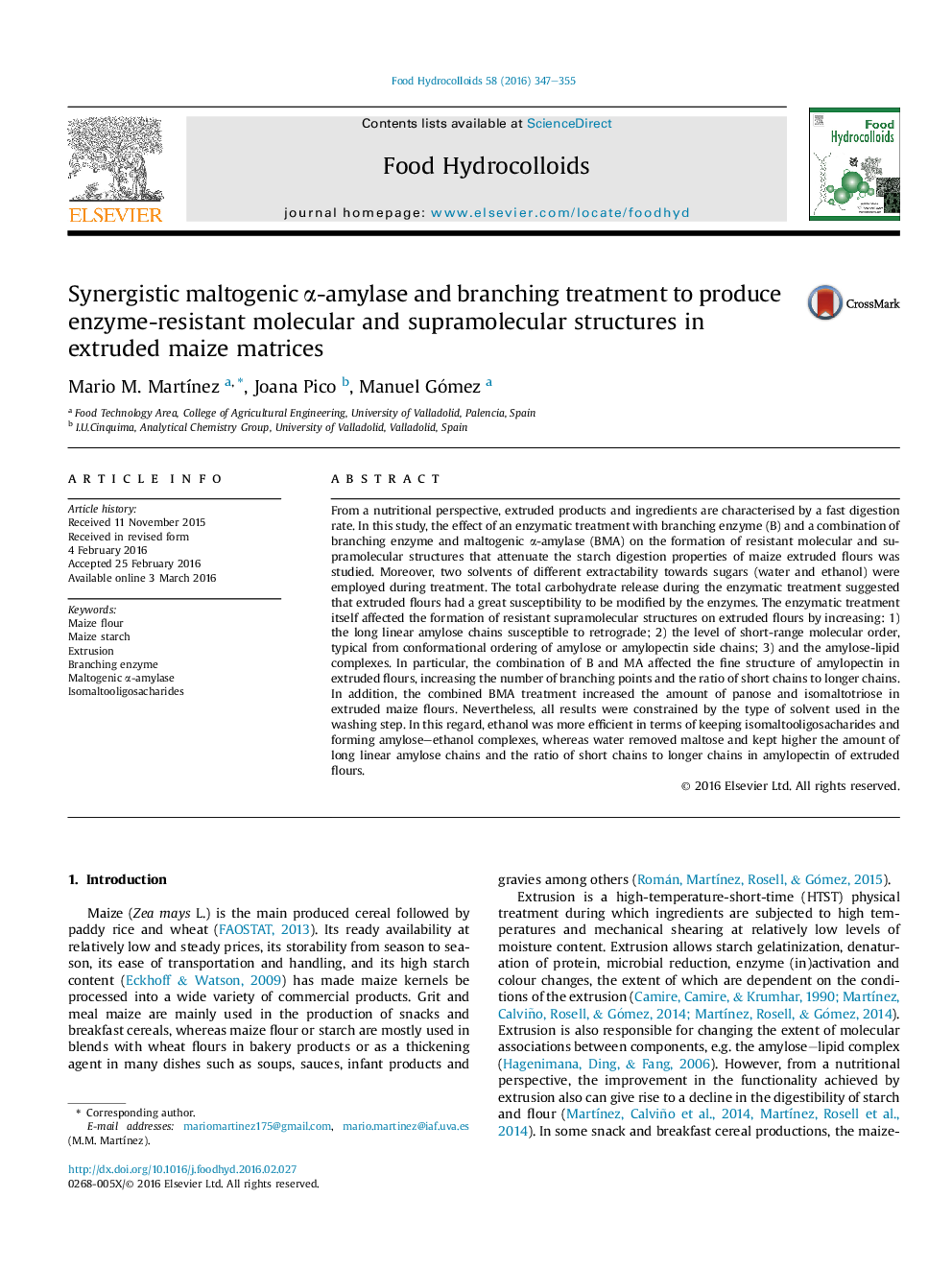| کد مقاله | کد نشریه | سال انتشار | مقاله انگلیسی | نسخه تمام متن |
|---|---|---|---|---|
| 603726 | 1454419 | 2016 | 9 صفحه PDF | دانلود رایگان |
• Synergistic maltogenic amylase and branching treatment in extruded flours was studied.
• Resistant molecular and supramolecular structures in extruded flours were created.
• The combined enzyme treatment increased the short- and long-range molecular order.
• Ethanol as an extractant was efficient in terms of keeping isomaltooligosacharides.
From a nutritional perspective, extruded products and ingredients are characterised by a fast digestion rate. In this study, the effect of an enzymatic treatment with branching enzyme (B) and a combination of branching enzyme and maltogenic α-amylase (BMA) on the formation of resistant molecular and supramolecular structures that attenuate the starch digestion properties of maize extruded flours was studied. Moreover, two solvents of different extractability towards sugars (water and ethanol) were employed during treatment. The total carbohydrate release during the enzymatic treatment suggested that extruded flours had a great susceptibility to be modified by the enzymes. The enzymatic treatment itself affected the formation of resistant supramolecular structures on extruded flours by increasing: 1) the long linear amylose chains susceptible to retrograde; 2) the level of short-range molecular order, typical from conformational ordering of amylose or amylopectin side chains; 3) and the amylose-lipid complexes. In particular, the combination of B and MA affected the fine structure of amylopectin in extruded flours, increasing the number of branching points and the ratio of short chains to longer chains. In addition, the combined BMA treatment increased the amount of panose and isomaltotriose in extruded maize flours. Nevertheless, all results were constrained by the type of solvent used in the washing step. In this regard, ethanol was more efficient in terms of keeping isomaltooligosacharides and forming amylose–ethanol complexes, whereas water removed maltose and kept higher the amount of long linear amylose chains and the ratio of short chains to longer chains in amylopectin of extruded flours.
Figure optionsDownload as PowerPoint slide
Journal: Food Hydrocolloids - Volume 58, July 2016, Pages 347–355
